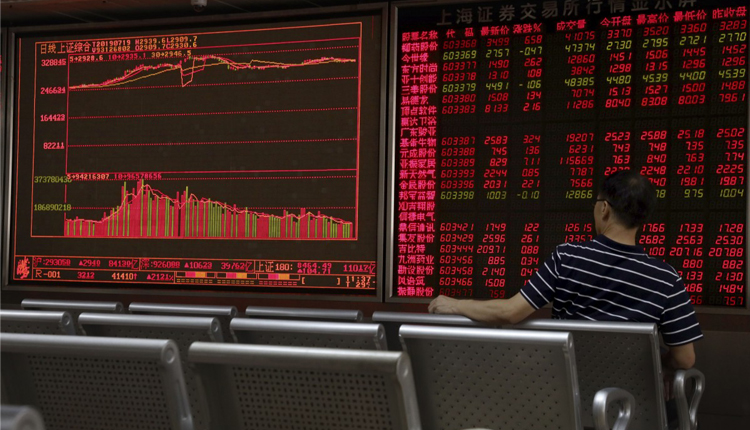Hong Kong markets fell on Friday after the city’s leader Carrie Lam announced a ban on face masks, effective October 5, amid more than four months of pro-democracy, anti-government protests.
The Hang Seng index dropped 1.11 percent to close at 25,821.03. Shares of public rail system operator MTR, which has seen its infrastructure damaged amid the unrest in the city, fell 1.91 percent .
In a press conference, Lam said the face mask ban was necessary because almost all protesters who carry out vandalism and violence covered their face. The latest development came following weeks of protests in the embattled city that have periodically degenerated into violence.
Elsewhere in Asia, stock moves in other major markets were more muted as investors awaited the release of U.S. nonfarm payrolls data for September.
In Japan, the Nikkei 225 recovered from an earlier slip to close 0.32 percent higher at 21,410.20, while the Topix index also made a turnaround to finish its trading day 0.26 percent higher at 1,572.90. South Korea’s Kospi closed 0.55 percent lower at 2,020.69 as shares of Hyundai Motor declined 1.56 percent.
Australia’s S&P/ASX 200 rose 0.37 percent to close at 6,517.10 as shares of biotechnology firm CSL surged 3.19 percent. The moves came as Australian retail sales data for August came in below expectations but higher than the previous month.
Retail sales on a month-on-month, seasonally adjusted basis rose 0.4 percent in August, as compared to a flat outcome in July and against expectations of a 0.5 percent increase in a Reuters poll.
Overall, the MSCI Asia ex-Japan index was largely flat. Markets in China were closed on Friday for a holiday.
US nonfarm payrolls awaited
Investors awaited U.S. nonfarm payrolls data for September, expected to be released later on Friday stateside.
“The jobs number is likely to be in the low 100,000s and some people consider that pretty low, but you have to realize that … the U.S. economy, the labor force isn’t growing very much at all,” Bluford Putnam, chief economist at CME Group, told CNBC’s Squawk Box on Friday.
“It doesn’t take much GDP growth, it doesn’t take much monthly job growth to keep the unemployment rate below 4 percent and if we stay below 4 percent on unemployment, we don’t have a jobs problem, consumers will continue to spend and we’re gonna avoid a recession,” Putnam said.
Earlier in the week, a series of data releases spooked markets and raised concerns over the prospect of an economic slowdown in the U.S.
The Institute of Supply Management’s (ISM) reading on the U.S. services sector fell last month to its weakest level since August 2016.
Meanwhile, manufacturing activity in the U.S. contracted to its worst level in more than a decade, according to a Tuesday report from the ISM. A September private payrolls report also showed a slowing pace of U.S. hiring.
“Investors can no longer fool themselves into thinking that the US can escape the global slowdown,” Kathy Lien, managing director of foreign exchange strategy at BK Asset Management, wrote in an overnight note.
“Dollar bears will be looking for validation from non-farm payrolls and while economists predict slightly higher job growth, investors are bracing for another ugly report,” Lien said. “The arguments favor a weak release.”
The U.S. dollar index, which tracks the greenback against a basket of its peers, was last at 98.871 after declining from levels around 99.2 yesterday.
The data releases come amid a trade war between Washington and Beijing that has raged for more than a year, with both economic powerhouses having already slapped tariffs on billions of dollars worth of each other’s goods. Delegations from the U.S. and China are expected to meet next week in the hope of finding a consensus.
Overnight stateside, shares on Wall Street recovered from earlier losses and rose amid expectations the U.S. Federal Reserve could cut rates later this month.
The Dow Jones Industrial Average closed 122.42 points higher at 26,201.04 while the S&P 500 gained 0.8 percent to end its trading day on Wall Street at 2,910.63. The Nasdaq Composite closed 1.1 percent higher at 7,872.26.
Expectations for an October rate cut jumped to 93.5 percent from 77 percent on Wednesday, according to the CME Group’s FedWatch tool. It was last at 88.2 percent. The Fed is scheduled to meet at the end of the month. Last month, the central bank cut rates for the second time in 2019.
The Japanese yen, often seen as a safe-haven currency in times of market turmoil, traded at 106.77 against the dollar after strengthening from levels above 108 earlier in the week. The Australian dollar changed hands at $0.6757 after rising from levels below $0.672 yesterday.
Oil prices rose in the afternoon of Asian trading hours, with international benchmark Brent crude futures up 0.78 percent to $58.16 per barrel and U.S. crude futures rising 0.65 percent to $52.79 per barrel.
Source: CNBC


